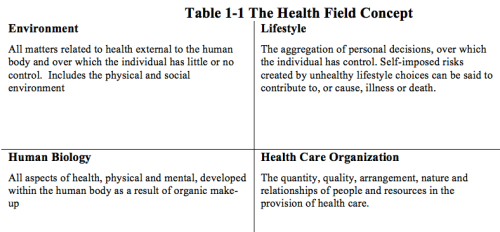Several weeks ago, Simon Stevens who is head of the English National Health Service (NHS), published Five Year Forward View. The report details his plan for the NHS, and it’s well worth a read because it is remarkably relevant to the Canadian context.
He describes a context that is quite similar to ours: an aging population with multimorbidity as the major epidemiological feature. The excellent hospital sector and well-developed primary care network of general practitioners is not adequate or entirely appropriate for the population served by the NHS.
He recognizes that there must be a “radical upgrade in prevention and public health” (NHS 9). The failure to do this in the last decade has resulted in “a sharply rising burden of avoidable illness” (NHS 3). In Canada, the weakness of public health initiatives has been marked by similar increases in obesity, diabetes and other preventable conditions.
Secondly, he sees that patients must “gain far greater control of their own care – including the option of shared budgets combining health and social care. The 1.4 million full time unpaid carers in England will get new support, and the NHS will become a better partner with voluntary organisations and local communities” (NHS 3).
This is clearly what must happen in Canada too, but there are few policymakers here who have such thoughts because of the severe limitations on the boundaries of our healthcare system. The relationship between the system and voluntary organizations is pretty sparse, and the idea of giving patients and caregivers control over any funds for their care is certainly not top of mind. It is time to include patients and family caregivers in discussions about their perceived needs and consider new ways of providing funds to meet them.
Thirdly, the document argues that:
The NHS will take decisive steps to break down the barriers in how care is provided between family doctors and hospitals, between physical and mental health, between health and social care. The future will see far more care delivered locally but with some services in specialist centres, organised to support people with multiple health conditions, not just single diseases. (NHS 3)
Importantly, he does not plan any structural changes in the NHS. Reforms will not involve changing the governance or boundaries of the many organizations that make up the NHS. It will include strengthening primary care, integrating access to a wide variety of services that will avert unnecessary hospital visits, and increasing the already abundant community services (which are notably sparse in Canada).
We recommend that policymakers take a good look at the document and consider how it might be applied in the Canadian context.
National Health Service. Five Year Forward Review. England: National Health Service, 2014. Web.



 Mary Mallon became famous as Typhoid Mary during this period. She sued the Public Health Department for her release, claiming that she was healthy and that they had no right to detain her without trial. She sent her stool sample to a private laboratory that found no typhoid bacteria in it.
Mary Mallon became famous as Typhoid Mary during this period. She sued the Public Health Department for her release, claiming that she was healthy and that they had no right to detain her without trial. She sent her stool sample to a private laboratory that found no typhoid bacteria in it. We already know that the cameras on some phones have become so sharp and clear that photographs of skin conditions can now be diagnosed by dermatologists online without any fancier technology. Now with the otoscope attachment and app, one can create photographs and even videos of the inner ear to check for inflammation. An otoscope is the tool that doctors use to examine the inside of your ear. The picture to the left is of the Cellscope Oto that is attached to an iPhone. Its app will allow almost anyone to examine the inner ear.
We already know that the cameras on some phones have become so sharp and clear that photographs of skin conditions can now be diagnosed by dermatologists online without any fancier technology. Now with the otoscope attachment and app, one can create photographs and even videos of the inner ear to check for inflammation. An otoscope is the tool that doctors use to examine the inside of your ear. The picture to the left is of the Cellscope Oto that is attached to an iPhone. Its app will allow almost anyone to examine the inner ear.
 The world has changed. At the time of her death, the cells were so widely known that a lab assistant at her autopsy was surprised that the cells actually belonged to a real person. But it remained that no effort was made to inform her family about these still living cells until a couple decades later. Henrietta Lacks was a black woman who was being cared for as a third class patient at Johns Hopkins, a major teaching hospital. Patients like her were given excellent care but at the same time, were seen as clinical material for scientific research. It was largely assumed that there was tacit agreement by patients to accept their research role, at least partly in exchange for their care. In those circumstances, patients played almost no role in making decisions about their care or about the use of materials taken from their bodies.
The world has changed. At the time of her death, the cells were so widely known that a lab assistant at her autopsy was surprised that the cells actually belonged to a real person. But it remained that no effort was made to inform her family about these still living cells until a couple decades later. Henrietta Lacks was a black woman who was being cared for as a third class patient at Johns Hopkins, a major teaching hospital. Patients like her were given excellent care but at the same time, were seen as clinical material for scientific research. It was largely assumed that there was tacit agreement by patients to accept their research role, at least partly in exchange for their care. In those circumstances, patients played almost no role in making decisions about their care or about the use of materials taken from their bodies.